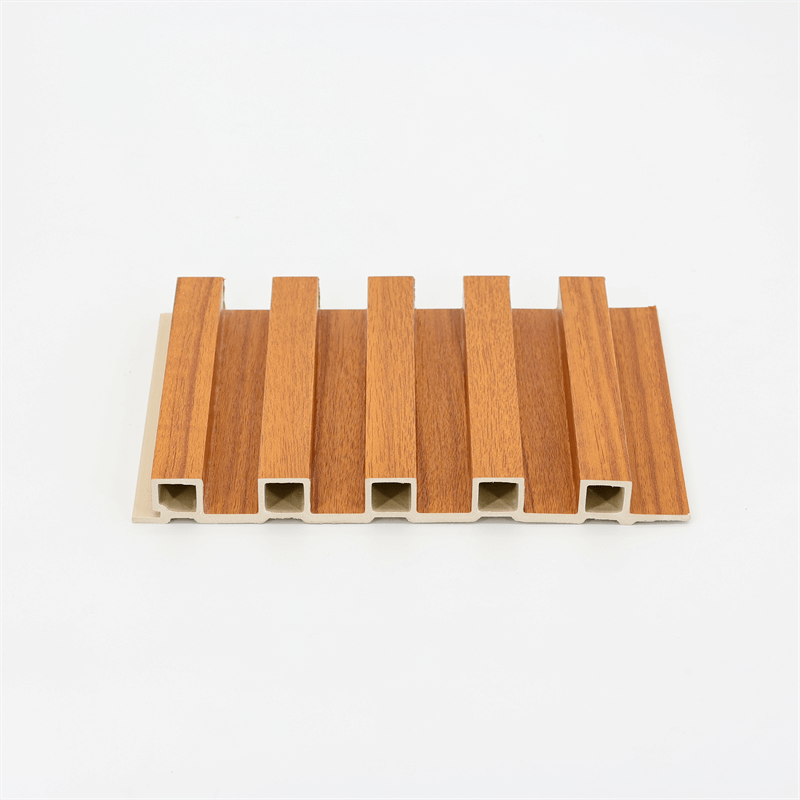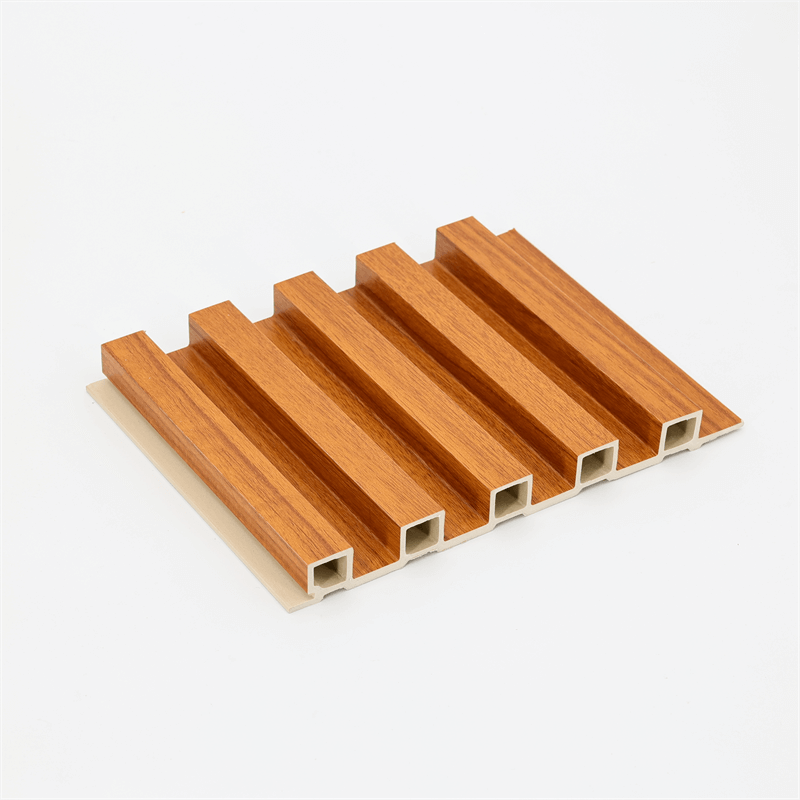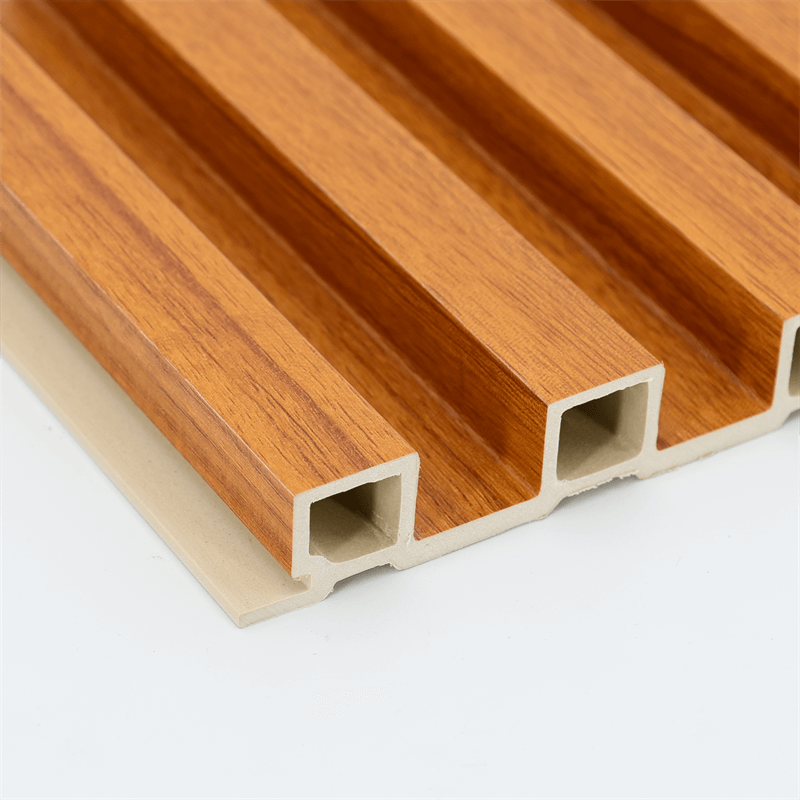In recent years, sustainable construction practices have gained significant attention due to their positive impact on the environment and society.
As construction professionals and homeowners increasingly seek eco-friendly building materials, Wood-Plastic Composite (WPC) wall panels have emerged as a popular choice.
This essay explores the various advantages of using WPC wall panels in sustainable construction, focusing on their environmental benefits, durability, versatility, and contribution to energy efficiency.

I. Environmental Benefits of WPC Wall Panels:
A. Renewable Resources: One of the primary advantages of WPC wall panels in sustainable construction is their composition of renewable resources.
Unlike traditional wall materials that rely on non-renewable resources, WPC wall panels are composed of wood fibers and recycled plastics.
The use of recycled materials helps reduce the demand for virgin resources and minimizes the environmental impact of the construction industry.
B. Reduced Carbon Footprint: WPC wall panels play a crucial role in reducing the overall carbon footprint of buildings.
The production process of WPC panels consumes less energy compared to traditional materials like concrete and steel.
Additionally, their use in construction helps sequester carbon dioxide in wood fibers, making them a carbon-negative option in many cases.
C. Waste Reduction: WPC wall panels are often made from post-consumer recycled plastics, diverting these materials from landfills and reducing waste.
Moreover, manufacturers can recycle old or damaged WPC panels, promoting a circular economy and reducing the need for new raw materials.
II. Durability and Longevity of WPC Wall Panels:
A. Resistance to Moisture and Rot: WPC wall panels demonstrate superior resistance to moisture, making them an ideal choice for wet and humid environments.
Unlike traditional wood panels that are susceptible to rot and decay, WPC panels maintain their structural integrity and appearance over time.
B. Weather Resistance: WPC wall panels are engineered to withstand various weather conditions, including extreme heat, cold, and UV radiation.
Their resistance to fading and discoloration ensures that buildings retain their aesthetic appeal for extended periods, reducing the need for frequent replacements and maintenance.
C. Insect and Pest Resistance: Unlike natural wood, WPC wall panels are not attractive to insects and pests, eliminating the need for chemical treatments to protect against infestations.
This attribute contributes to healthier indoor environments and supports sustainable construction practices.

III. Versatility of WPC Wall Panels:
A. Design Flexibility: WPC wall panels offer architects and designers a wide range of design possibilities.
They can be molded into various shapes, sizes, and textures, allowing for innovative and creative applications in both interior and exterior spaces.
This flexibility enhances the architectural appeal of buildings and facilitates sustainable design practices.
B. Aesthetic Options: WPC wall panels are available in a plethora of colors and finishes, resembling natural wood or offering a contemporary appearance.
They can mimic the appearance of traditional wood panels without the associated environmental drawbacks, making them an appealing choice for environmentally conscious consumers.
C. Easy Installation and Maintenance: The lightweight nature of WPC wall panels simplifies their installation process, reducing construction time and labor costs.
Additionally, the panels require minimal maintenance, eliminating the need for frequent repainting or refinishing, further promoting sustainable building practices.
IV. Contribution to Energy Efficiency:
A. Thermal Insulation: WPC wall panels provide excellent thermal insulation properties, contributing to the energy efficiency of buildings.
They help maintain stable indoor temperatures, reducing the reliance on heating and cooling systems and lowering energy consumption.
B. Sound Insulation: WPC wall panels also offer effective sound insulation, creating quieter and more comfortable living and working environments.
This feature contributes to improved occupant well-being and further supports sustainable construction practices.
Wood-Plastic Composite (WPC) wall panels have emerged as a sustainable alternative to traditional building materials, offering numerous advantages in sustainable construction.
Their environmental benefits, durability, versatility, and contribution to energy efficiency make them an attractive choice for architects, builders, and homeowners.
By opting for WPC wall panels, stakeholders in the construction industry can reduce their carbon footprint, minimize waste, and create energy-efficient buildings that contribute to a more sustainable future.

Embracing these eco-friendly alternatives can pave the way for a greener and more resilient built environment.
Furthermore, the durability and longevity of WPC wall panels ensure that buildings maintain their structural integrity and aesthetic appeal for extended periods, reducing the need for frequent replacements and maintenance. Their resistance to moisture, weather, and pests makes them an ideal choice for a wide range of applications, both indoors and outdoors.
The versatility of WPC wall panels allows architects and designers to unleash their creativity and explore innovative design possibilities.
With a wide array of colors, finishes, and textures available, these panels can be tailored to suit various architectural styles and design preferences.
Additionally, their easy installation and minimal maintenance requirements streamline the construction process and contribute to cost savings.
Moreover, WPC wall panels significantly contribute to energy efficiency.
Their thermal insulation properties help regulate indoor temperatures, reducing reliance on heating and cooling systems and lowering energy consumption.
Additionally, their sound insulation capabilities create quieter and more comfortable living and working environments, enhancing occupant well-being.
In conclusion, WPC wall panels offer a compelling solution for sustainable construction.
Their environmental benefits, durability, versatility, and contribution to energy efficiency position them as a viable alternative to traditional building materials.
By embracing WPC wall panels, the construction industry can take significant strides towards reducing its environmental impact, promoting resource efficiency, and creating buildings that prioritize sustainability without compromising on aesthetics and functionality.
As the demand for eco-friendly construction materials continues to grow, WPC wall panels will play a crucial role in shaping a greener and more sustainable built environment for future generations.